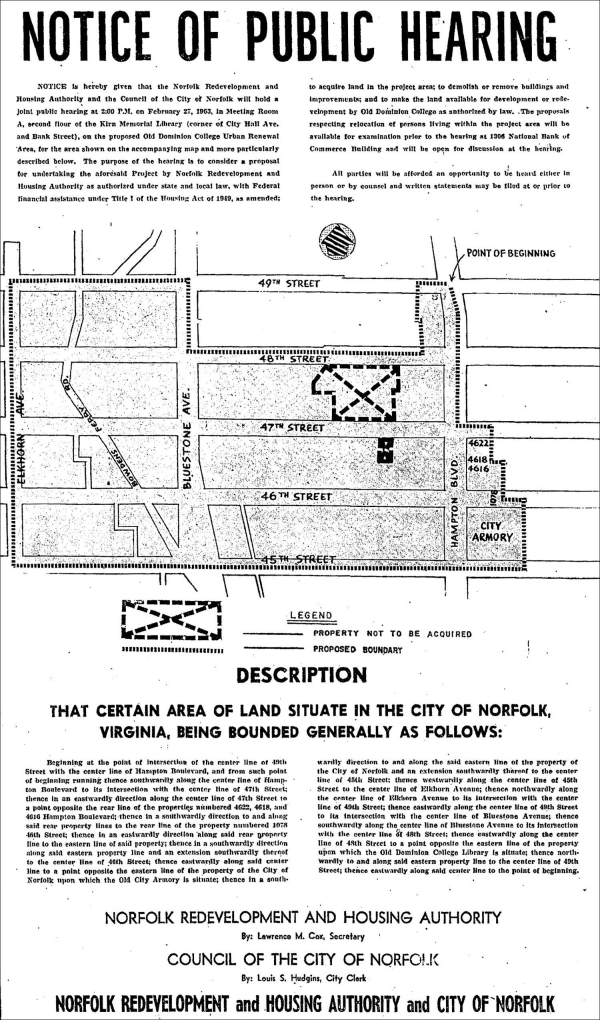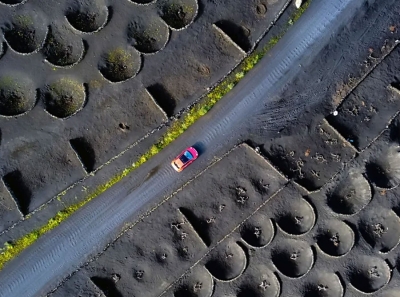Series: Uprooted: Virginia Universities Have Expanded by Dislodging Black Communities
In the second half of the 20th century, the establishment and expansion of public universities across Virginia uprooted Black families, hindering their efforts to accumulate wealth in the most American way — homeownership.
This article was produced for ProPublica’s Local Reporting Network in partnership with the Virginia Center for Investigative Journalism. Sign up for Dispatches to get stories like this one as soon as they are published.
At their annual reunion last month, Deborah Taylor Mapp and her former neighbors shared memories of growing up in the Norfolk, Virginia, neighborhood of Lamberts Point when it was a thriving middle-class Black community.
Over dinner at the Sunset Grill, a local bar that was called Nell’s back in their day, they bragged about how the Lamberts Point teams dominated youth sports in Norfolk. They swapped stories of dancing around the maypole at a school festival and fishing and crabbing in the Elizabeth River.
But memories are all Taylor Mapp has. Houses, schools, grocery stores and churches that she knew are long gone, leveled in the 1960s and ’70s to make room for an expanding college, now the main campus of Old Dominion University. The Lamberts Point community remains, but it’s much diminished. To build the campus, the city of Norfolk took as many as a dozen properties from Taylor Mapp’s extended family, which had been rooted in Lamberts Point since the 1890s. Elderly relatives moved in with family members or went into nursing homes.
”It did break my heart,” said Taylor Mapp, 75, a retired analyst of behavioral health policy for the state of Virginia, who lives in another Norfolk neighborhood. “I would never forget Lamberts Point — ever.”
Last week, the Virginia Center for Investigative Journalism at WHRO and ProPublica documented how a college expansion into a similarly established Black community had happened less than an hour away, in Newport News. There, in the early 1960s, officials chose another Black neighborhood for the site of Christopher Newport College, even though other locations were available, wiping out a growing middle-class community. A Christopher Newport spokesperson acknowledged that “residents of a valuable and well-established neighborhood were displaced,” but maintained that the university has revived the city’s economy.
New reporting shows that Christopher Newport College was not alone. In the second half of the 20th century, the establishment and expansion of public universities across Virginia uprooted hundreds of Black families, hindering them from accumulating wealth in the most American way — homeownership. Old Dominion and the University of Virginia — the system’s flagship, founded by Thomas Jefferson — dislodged Black communities, according to contemporary news accounts, the universities’ official histories and former residents. They either acquired properties through legal takings, or families sold them because they faced the prospect of an eminent domain seizure.
Virginia’s legal and political climate made it easy for local officials to raze and redevelop Black neighborhoods. Federal eminent domain law and U.S. Supreme Court decisions allowed government agencies to forcibly purchase private property for almost any project defined as a public benefit. The federal government increased contributions to local redevelopment projects during the 1960s. Black people lacked the political clout to fight back, as they faced Jim Crow restrictions on voting until 1965, and few were elected or appointed to local governing boards until the 1970s. It wasn’t until 2012 that Virginia voters overwhelmingly approved a constitutional amendment reining in the government’s power to take private property.
Displaced Black families often struggled to find housing of equal value, and were pushed into lower-income neighborhoods, said Robert Nelson, American studies professor at the University of Richmond. As a result, along with discriminatory banking practices and zoning policies, eminent domain fostered continuing inequality in homeownership.
Today, white home buyers are more than twice as likely as Black buyers to use the proceeds from another home sale to make a down payment, according to the National Association of Realtors. Black purchasers are three times more apt to dip into retirement savings to buy their home.
“These universities … are doing great things for our communities, for our country,” said Davarian Baldwin, American studies professor at Trinity College in Hartford, Connecticut and author of “In the Shadow of the Ivory Tower: How Universities Are Plundering Our Cities” (2021). “They are the center of the political economy today. We need to understand that.
“But that prosperity and greatness has come with a profound cost for the host communities where they sit. And we must account for that. We must repair that.”
UVA, the state’s premier institution, set an early example for alienating Black communities.
Designed and founded by Jefferson — U.S. president, slaveholder and author of the Declaration of Independence — the university in the 1890s was unhappy about a section south of campus grounds known as “Canada,” originally settled before the Civil War by free people of color.
Many residents worked for UVA as laborers, custodians and cooks. But university administrators felt the area was filled with “unsightly houses,” according to a 2021 article in a UVA publication about the university and race relations. The university separated itself from the community by erecting a performance hall between them. In the ensuing decades, developers built housing in the neighborhood, with contracts containing racial covenants banning the sale of property to non-white residents.
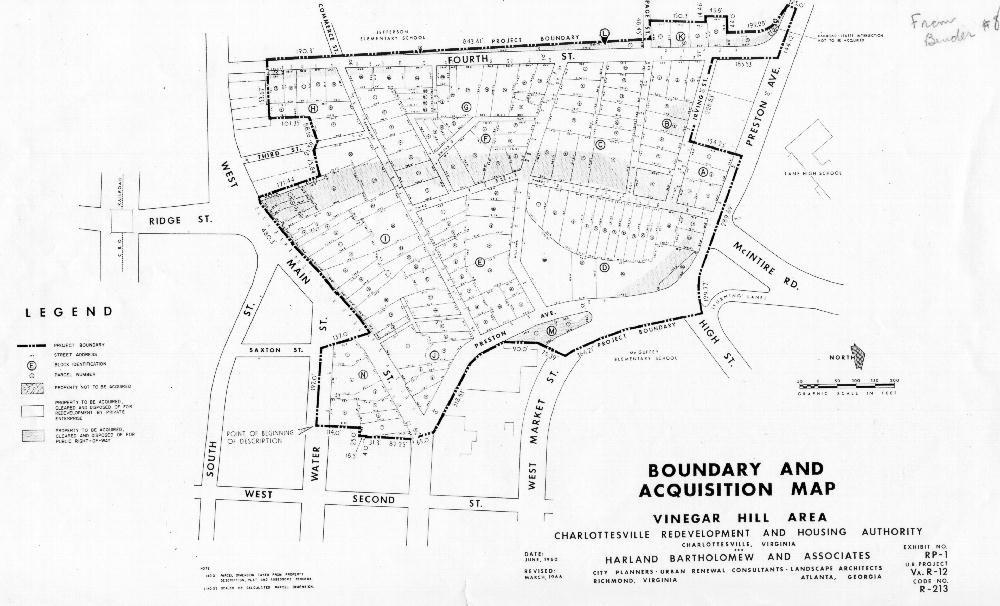
In the 1960s, while UVA was doubling its student population and expanding its footprint, the city of Charlottesville used eminent domain to wipe out Vinegar Hill, a hub of Black commerce that sat between the university and the downtown commercial district. Vinegar Hill businesses produced about $1.6 million in income from goods and services annually, according to a 1960 survey.

Despite the busy cluster of Black businesses, city leaders declared the community neglected and run-down. Before taking a property through eminent domain, cities and housing authorities had to prove part of a neighborhood was blighted — but their evidence could be as scant as a neglected home or business.
Proving blight “wasn’t very hard in the ’40s, ’50s and ’60s,” said Jonathan Apgar, a retired state circuit court judge and editor of an encyclopedia of major eminent domain cases in the commonwealth. For example, he said, “little mom-and-pop stores that had gone out of business and were vacant” could give a city legal cause to seize a property.
The Charlottesville housing authority didn’t give Black business owners in Vinegar Hill a chance to renovate their shops before declaring the area blighted, a longtime resident was quoted as saying in a 1998 book by two Purdue University professors, “Urban Renewal and the End of Black Culture in Charlottesville, Virginia.”
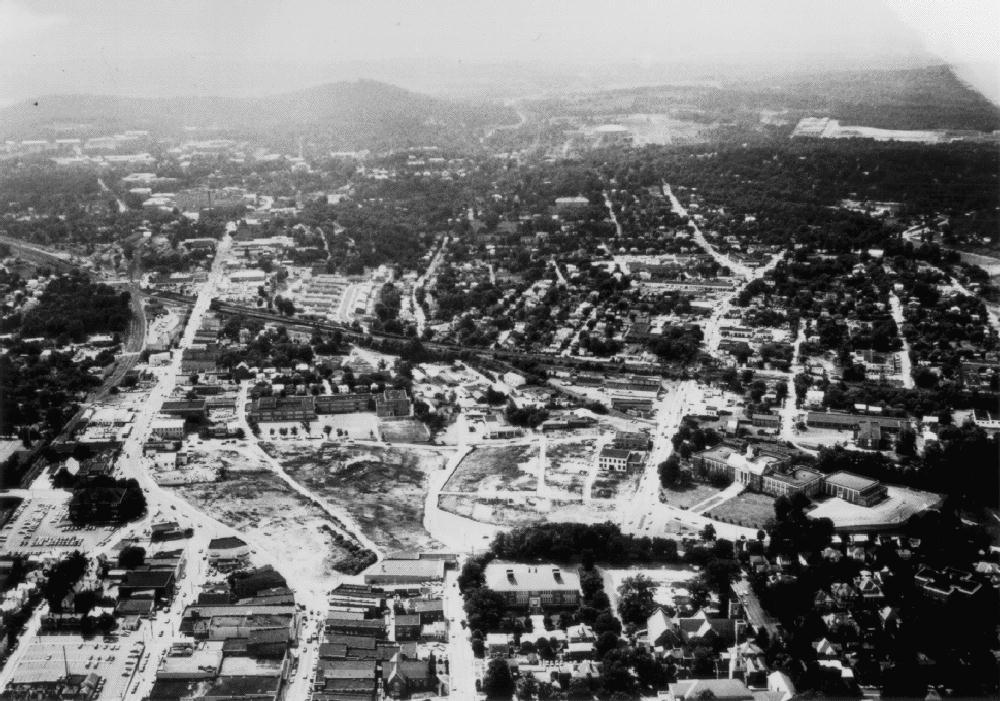
“Some were willing to sell, some were not,” Walter Jones told the book’s authors. “Some fought it in the courts for more money, and then some of them had to go anyway.” Today, what was once Vinegar Hill is a largely white commercial district with an upscale hotel, restaurants and antiques shops.
In the 1970s, UVA’s University Health System acquired properties from Black owners in the Gospel Hill neighborhood to build Jordan Hall, named after the former medical school dean and prominent eugenicist Harvey E. Jordan. The university board of visitors voted to rename it in 2016 for Black medical school alumna Vivian Pinn.
“As the university footprint grows,” said Andrew Kahrl, professor of history at UVA, “the city’s Black population shrinks.”
A UVA spokesperson said the university has launched several initiatives in recent years to address its role in slavery, segregation and the displacement of Black residents.
Former president Teresa Sullivan established two presidential committees, in 2013 and 2018, to research and publish histories of the university’s role in slavery and segregation. The first commission focused on the pre-1865 period, while the second has examined “the American academy’s history of both benefitting from and perpetuating” the legacies of slavery, including redlining and racially restrictive zoning.
In 2020, current president Jim Ryan announced a goal of developing up to 1,500 affordable housing units on property owned by the university or its foundation by 2030. UVA will offer low-cost land leases to developers to help subsidize the residential projects, which will be open to residents unaffiliated with the university.
“These important conversations and resources have been in the works for years, and are helping us best serve all who live, work and learn in and around the University,” said university spokesperson Bethanie Glover.
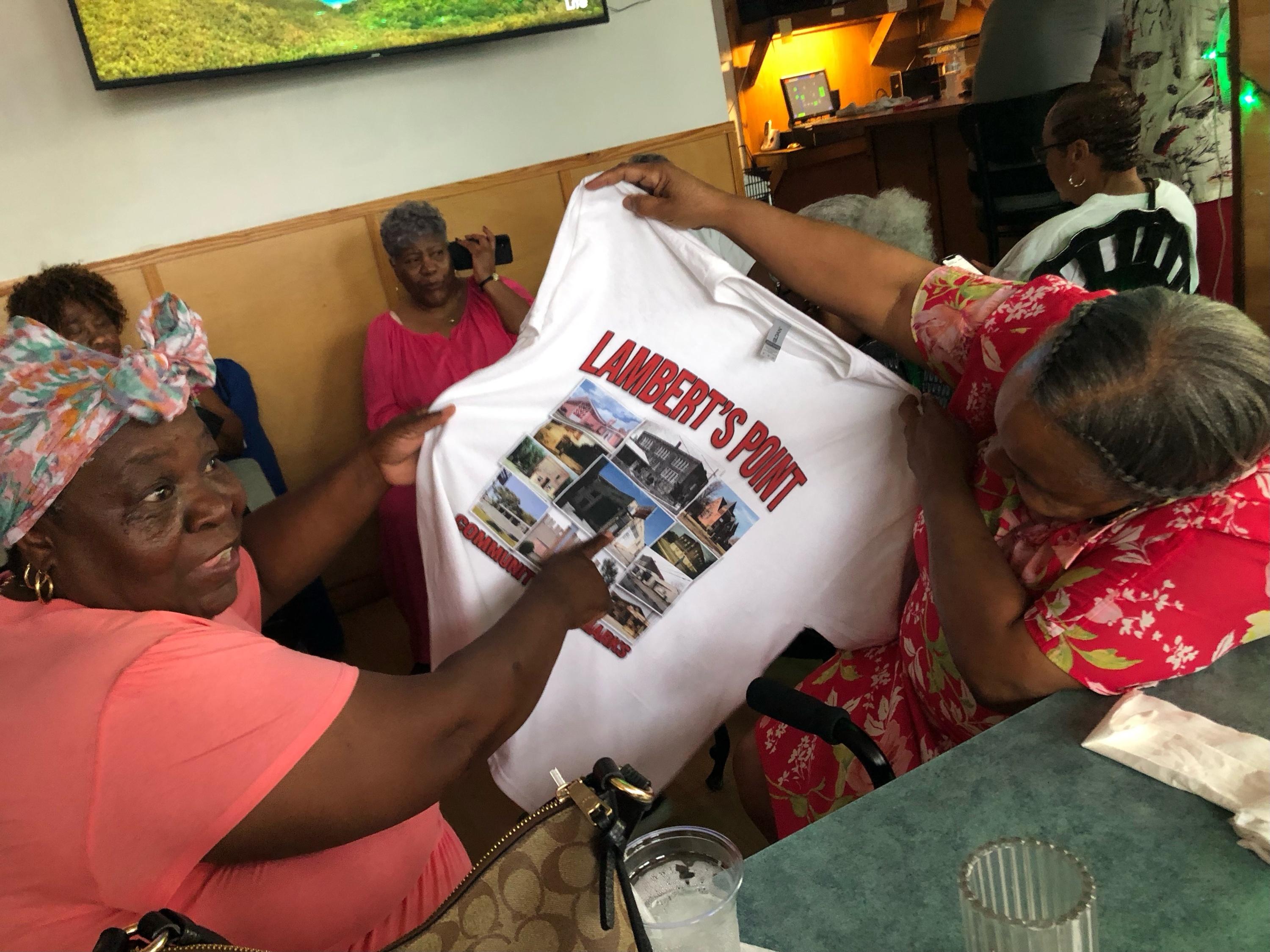
More than 160 miles southeast of Charlottesville, Lamberts Point stretches along the Elizabeth River, sitting just six miles from Norfolk Naval Station, the world’s largest naval base. The neighborhood was a working-class, mostly white neighborhood in the early 20th century. It slowly gained Black residents, and by the late 1950s, it was almost entirely a middle-class Black community with single-family homes, apartment buildings, shops and schools.
Like the city and college officials in Newport News, Norfolk leaders chose to set a college in a vibrant Black community. Old Dominion, which started in 1930 as a branch campus of William and Mary, became independent in 1962.
One February afternoon in 1963, the all-white Norfolk City Council and other city officials met with Lamberts Point residents in a conference room downtown.
They explained that Lamberts Point was about to have a new college dropped into its center. The city and the college planned to raze 21 acres of homes and redevelop another 16 acres of commercial properties and streets, acquiring them through both eminent domain and traditional sales.
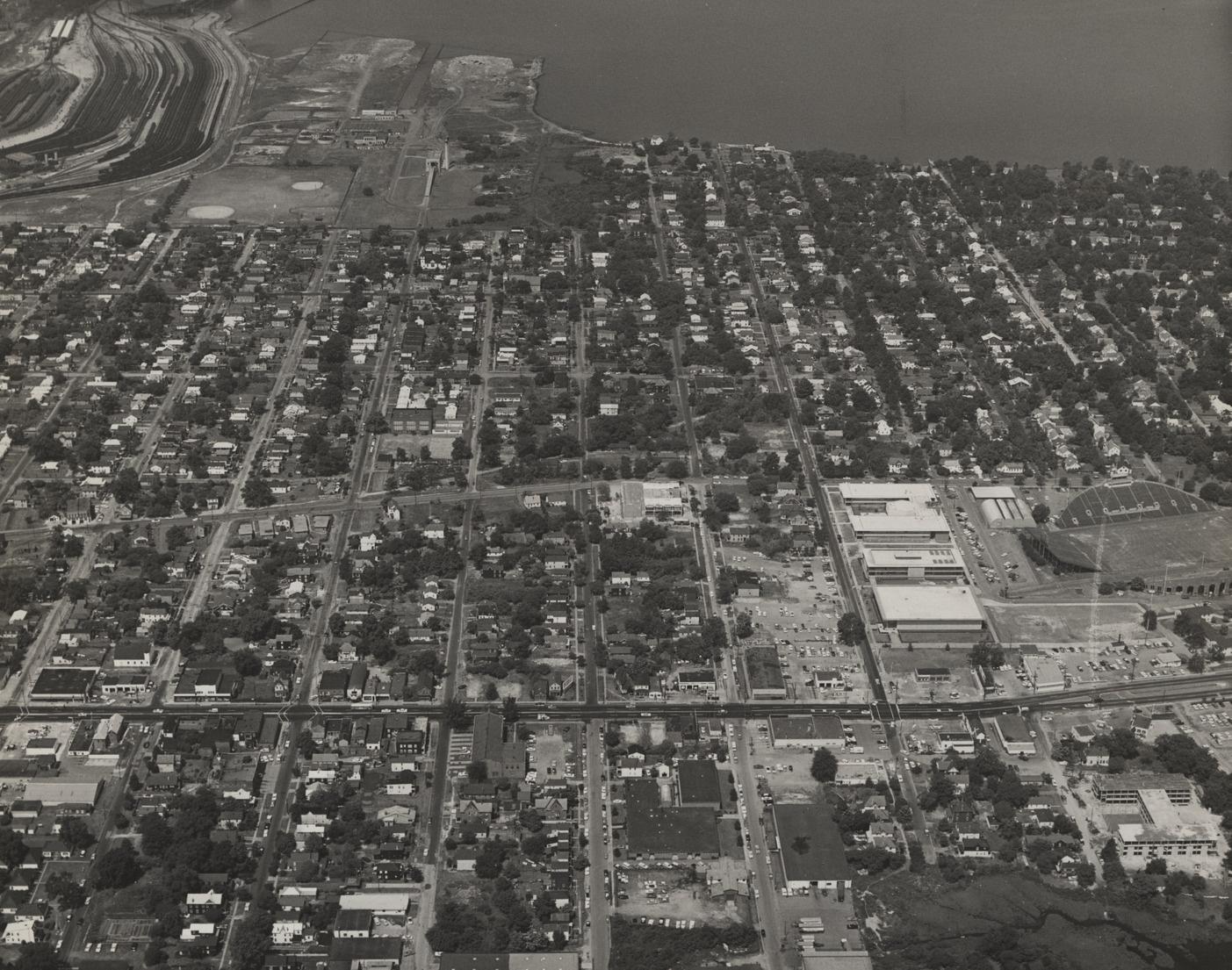
Katherine “Tiny” Carter of West 47th Street, close to the heart of the targeted land, approached the microphone. She and her husband, Clyde, owned a three-bedroom home in Lamberts Point.
“I am in the area where you are going to build a building real soon,” Carter began. “I would like to know, just about how much time do I have?”
Housing authority director Lawrence Cox answered: “You don’t have a lot of time.”
“That’s what I want to know,” Carter said.
“Based on the present schedule,” Cox said, according to a transcript, “it would appear as though you only have about three months.”
The Carters and dozens of other families were forced out within a year.
The Carters “loved it out there,” said their nephew Billy Farmer, who used to visit them in the summer and go for rides in Clyde’s Thunderbird convertible.
Inside five years, the city and the college had displaced 156 families and demolished 140 buildings in a 40-acre swath.
By 1967, the U.S. government had spent $1.2 million on the Old Dominion campus, with Norfolk contributing another $600,000.
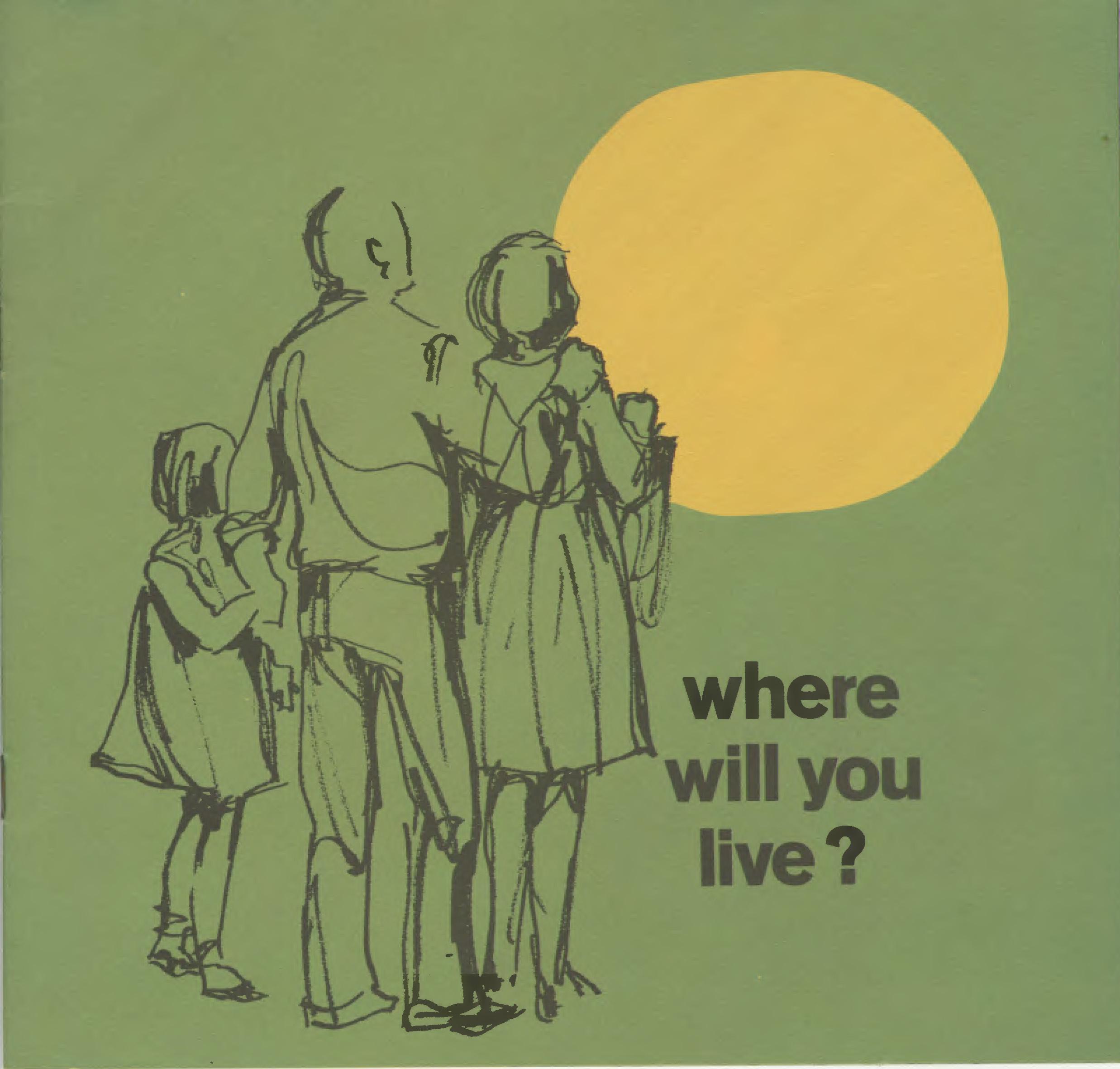
At the time, Norfolk officials said in public meetings with property owners that they paid market rate for homes. Today, Taylor Mapp and other former residents dispute this, saying their families did not receive a fair price. The city also gave families $200 — worth about $2,000 today — for relocation costs. Businesses received up to $20,000, equivalent to $200,000 today.
After the first phase of campus construction drove out the Carters and their neighbors, the university continued expanding into Lamberts Point. Residents fought back, sometimes contending that the adjacent affluent white neighborhoods, Larchmont and Edgewater, would make better sites for new development.
Even as the college was expanding, Black families continued to see Lamberts Point as a desirable location. In the mid-1960s, Jennifer Douglas-Pegues moved there with her family into a new, one-story clapboard house with three bedrooms and one bathroom. Her father worked at the naval base and her mother was a homemaker; they had paid $10,200, equivalent to $100,000 today. The yard was big enough for her father to grow beds of roses, tomatoes and greens. Her mother was delighted. “They had accomplished the American dream,” said Douglas-Pegues, a retired airline employee and educator, who is Black.
Old Dominion and the city began eyeing their home in the early 1970s. Threatened with an eminent domain taking, her father accepted a buyout rather than go through a forced eviction, she said.
He bought another home in a predominantly Black neighborhood, Berkley. It later plummeted into one of the poorest sections of Norfolk.
“Eminent domain,” Douglas-Pegues said in a recent interview, “is just a white man’s way of saying, ‘We’re going to take your land.’”
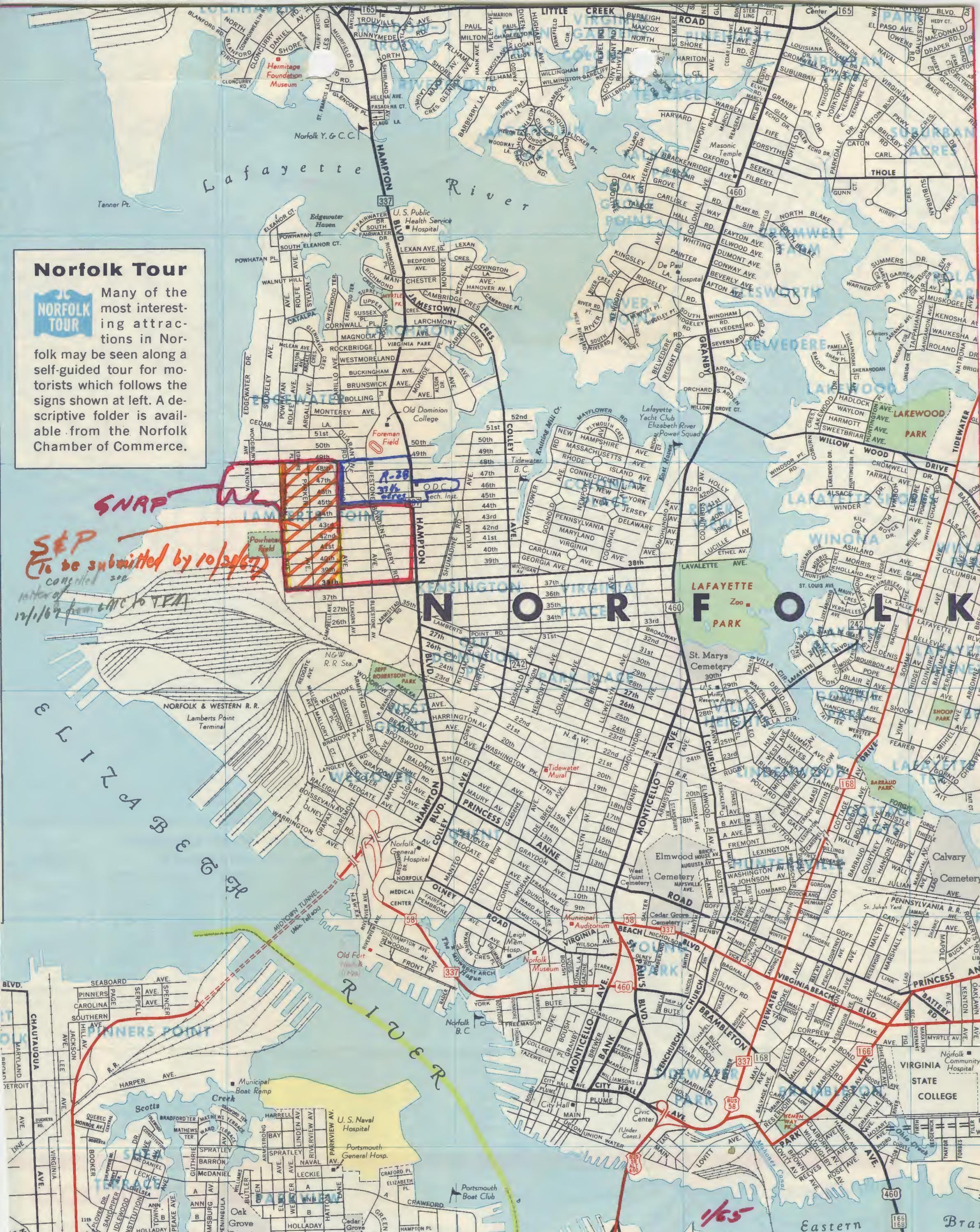
Today, her old street, West 45th, is the heart of the ODU campus, near academic buildings named after wealthy Virginia donors, as well as the Mills Godwin Life Sciences Building, named after a former governor not known for his sympathy to displaced community residents. When Lamberts Point residents complained to Godwin in 1969 about being pushed out by Old Dominion, Godwin was quoted as responding, “Progress has problems connected with it, and those caught in the path of progress have to suffer for it.” Godwin died in 1999.
Douglas-Pegues said Old Dominion should do more to recognize the sacrifices made by the Black families of Lamberts Point.
“Collateral damage,” she said. “That’s what we were.”
ODU officials said they have long recognized the need to improve relationships with their neighbors in Lamberts Point. In 1991, then-president James V. Koch hired Cecelia Tucker, who is Black, as the university’s first community relations executive.
“ODU had the reputation of being racist — I knew that — but he [Koch] wanted to change all of that,” Tucker told a university publication when she retired in 2022. “And I thought, ‘This is something I could help do.’ I bought into his vision to bring the community together.”
In the past three decades, through community outreach and shifting admissions policies, students of color have increased from 21% to 54% of ODU’s enrollment. The school has also published research documenting the disruption it caused in Lamberts Point, and established an annual scholarship in the name of a former Lamberts Point civic league leader. It posted a plaque on the site of a former elementary school.
The neighborhood association “is included in campus-wide activities and sporting events,” an ODU spokeswoman said.
Last month, hundreds of people came from as far away as California for the three-day Lamberts Point reunion. T-shirts capturing images of bygone churches, schools and grocery stores sold for $25. ODU donated the tables and chairs for the Saturday picnic.
As the party at the Sunset Grill wound down, Taylor Mapp chatted with old Lamberts Point friends and neighbors. She told them she lives several miles away in Broad Creek, an upscale development that is home to some of the city’s Black leaders.
It’s nice, she said. Then she asked them if they remembered how easy it was to pluck the crabs out of the river.
Reach Louis Hansen at [email protected] or (757) 681-2946.
Gabriel Sandoval contributed research.

